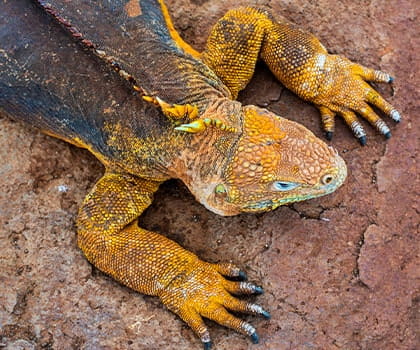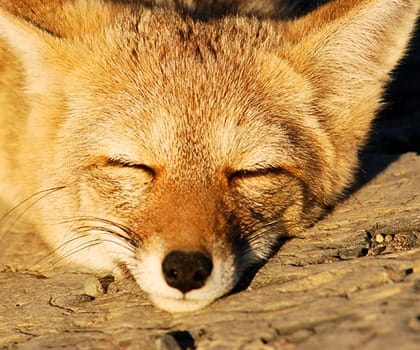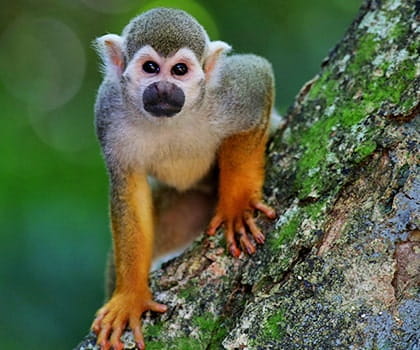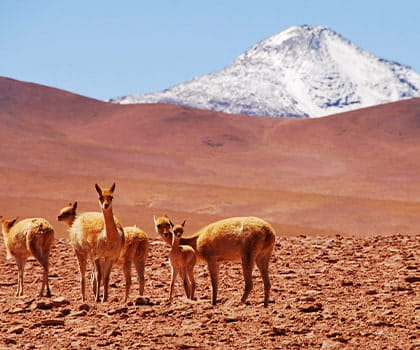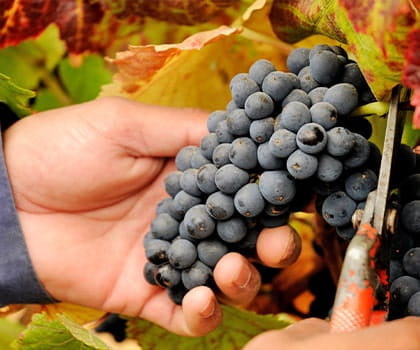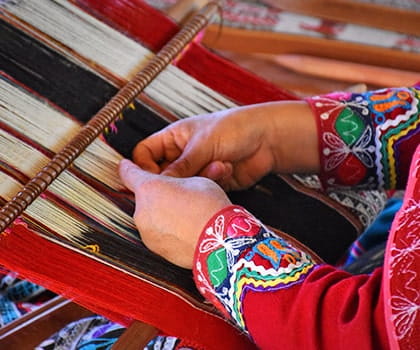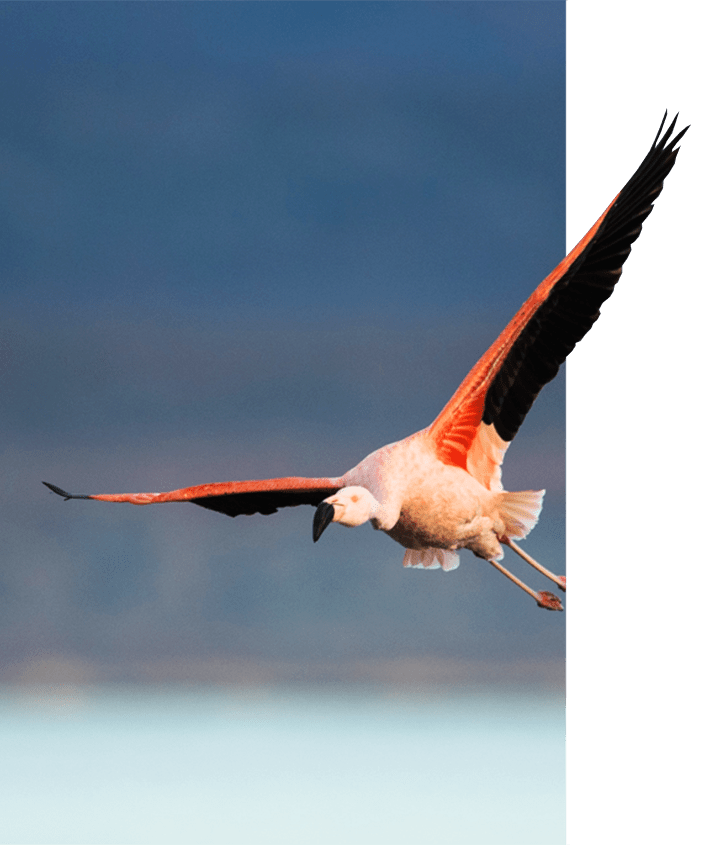
What do you dream about when you imagine a luxury trip to Patagonia? The animals? The glaciers? Or unbelievably beautiful lakes and landscapes?
The great thing is that you don’t have to choose. Patagonia has it all — the wildlife you won’t see anywhere else, the bucket-list sights and experiences that excite every adventurer. We put together a list of our favorite things to see and do in Patagonia. Which adventure is calling your name?
1. See Perito Moreno, the glacier at the end of the world.
Perito Moreno isn’t only the most famous glacier in Patagonia, it’s considered the eighth wonder of the world by many—and if you ever see it, you’ll know why. At its face, the glacier is over 18 miles long and 3 miles wide, a massive expanse of sapphire and azure ice.
You can walk the boardwalk and snap a few photos, but if you’re truly adventurous, take an ice trekking tour on the glacier. Strap on your crampons, grab your ice ax and immerse yourself in one of the most unique experiences in the whole world. Not your thing? Kayaking at Perito Moreno is also a possibility.
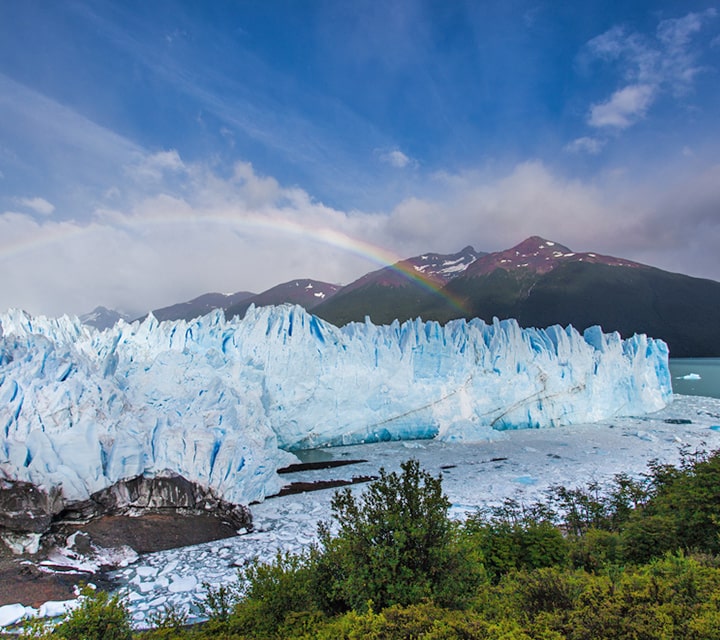
2. Visit during the “secret season” to catch a glimpse of a puma.
Torres del Paine National Park is home to roughly fifty pumas, and winter, Patagonia’s secret season, is the best time to see them. Imagine waking before dawn to explore the pristine landscape in search of these majestic animals as they finish their hunt and look for a place to rest for the day.
Pumas are nocturnal animals, feeding on the guanaco that graze the foothills. Experienced trackers rely on cues such as the alarm cry of the guanaco to alert them to the presence of a puma. Some trackers are so in tune with the animals they follow that they recognize some by name.
3. You’ll never forget the first time you lay eyes on the towers.
The Three Towers of Torres del Paine are jagged granite peaks that rise over a turquoise glacial lake in the heart of the park. The hike to the base of the towers is one of the most sought-after experiences by visitors to Patagonia. Some 150,000 visitors make the journey to see the towers each year.
Whether you explore them on foot or take a vehicle safari through the park, your first sight of these amazing spires is simply unforgettable.
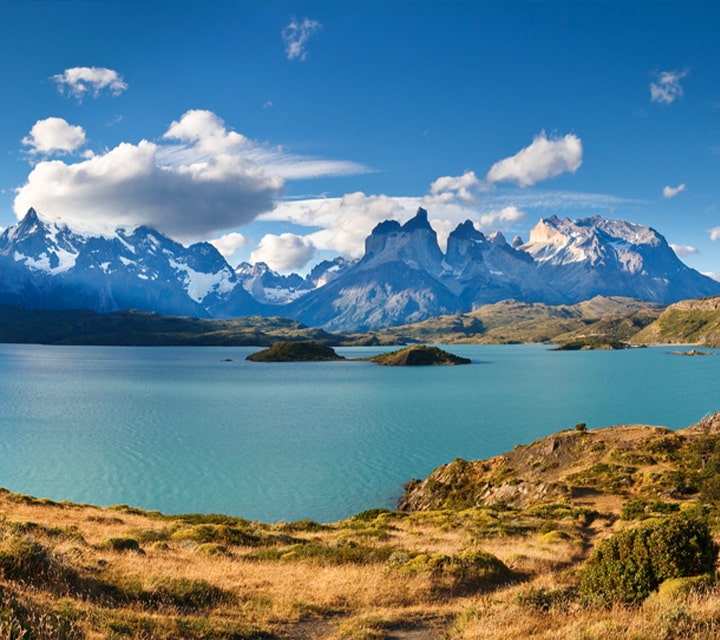
4. The incredible blue of Lago Pehoe will take your breath away.
Floating like a jewel just beneath the Paine Massif, Lago Pehoe is famous for its incredibly rich colors. Depending on the angle of the sun, the surface of the lake ranges from the palest ice blue to teal to rich, deep amber. It’s one of the most beautiful lakes in the world.
If you’re lucky, you’ll see guanacos feeding along its shores or even an ostrich-like rhea jogging by. Bring your camera, you won’t want to forget this magical place.
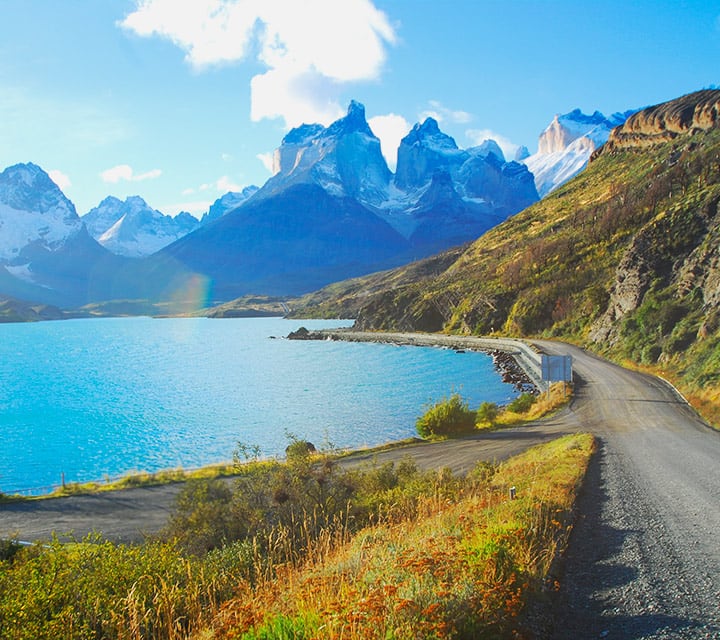
5. Kayaking the “iceberg graveyard” in Lago Grey is a once-in-a-lifetime experience.
Icebergs are “born” when a piece of glacier melts and falls off, a process known as calving. Lago Grey, a glacial lake at the foot of Grey Glacier, is the perfect place to paddle through a maze of icebergs calved by the glacier and held captive by the wind.
These floating works of art in the “iceberg graveyard” are some of the most mind-blowing sights in Torres del Paine.
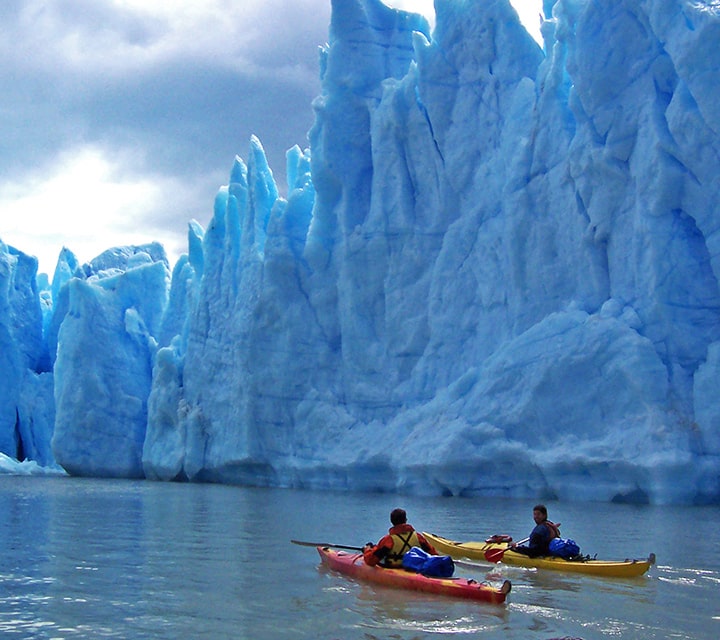
6. Llama? Alpaca? Camel? Whatever it is, the Patagonian Guanaco is adorable.
Guanacos are technically camelids, but they more closely resemble a llama or alpaca. Their soft caramel-colored fur and wide, heavily lashed eyes make them extraordinarily photogenic—you’ll be taken in by these hardy creatures.
At one time, nearly 50 million guanacos lived in South America; today, the number has dwindled to about 500,000, due to hunting, poaching, and the introduction of non-native sheep species. Patagonia is one of the best places to see them in their natural state.
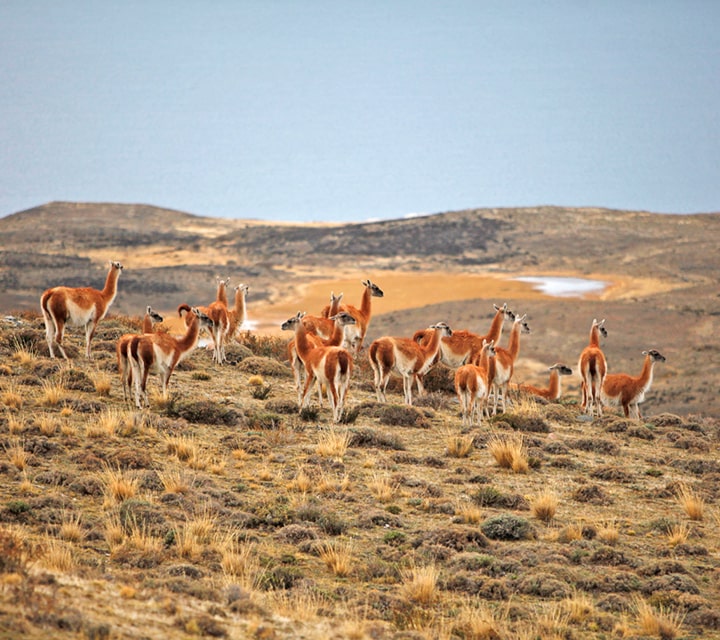
7. Feel like a gaucho riding a horse across the endless Patagonian steppe.
Gauchos still tend sheep on the great estancias in Patagonia, a lifestyle relatively unchanged generation after generation. They are part of the fabric of Tierra del Fuego. You can inhabit, for an afternoon, bits of the gaucho lifestyle on a horseback ride across the steppe.
And after a day in the saddle, don’t miss an authentic Patagonian meal of cordero al palo, which is lamb stretched on an iron cross and roasted directly over a wood fire. You can find the dish at restaurants in Chile and Argentina, but there’s nothing like the real Patagonian barbeque.
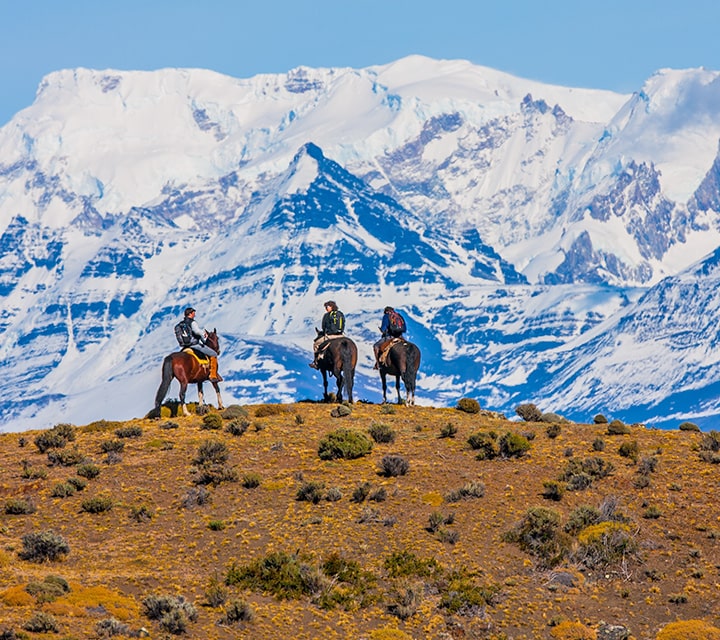
8. Pink flamingos in Laguna Nimez are picture-perfect.
The Laguna Nimez Reserve is just a short distance from El Calafate, and it’s the place to go to find pink clouds of Chilean flamingos picking their way across Lago Argentino.
Flamingos aren’t the only wildlife you can observe and enjoy at Laguna Nimez — you may also see geese, black-necked swans, silver grebes, sparrow hawks, ducks, and even ibis. Don’t forget your binoculars!
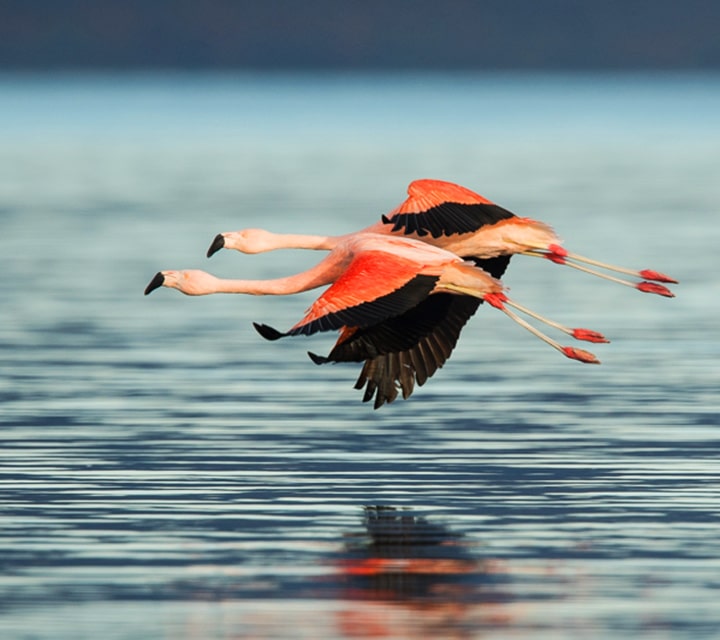
9. The adventurer in you will love hiking the French Valley.
The French Valley hike makes up the middle leg of the famous W trek in Torres del Paine, but if you’re up for the journey, you’ll be rewarded with spectacular views of waterfalls, rugged peaks, forests, and hanging glaciers. The distant sound of thunder is the noise a calving glacier makes. It’s where Mother Nature puts on a truly magnificent show.
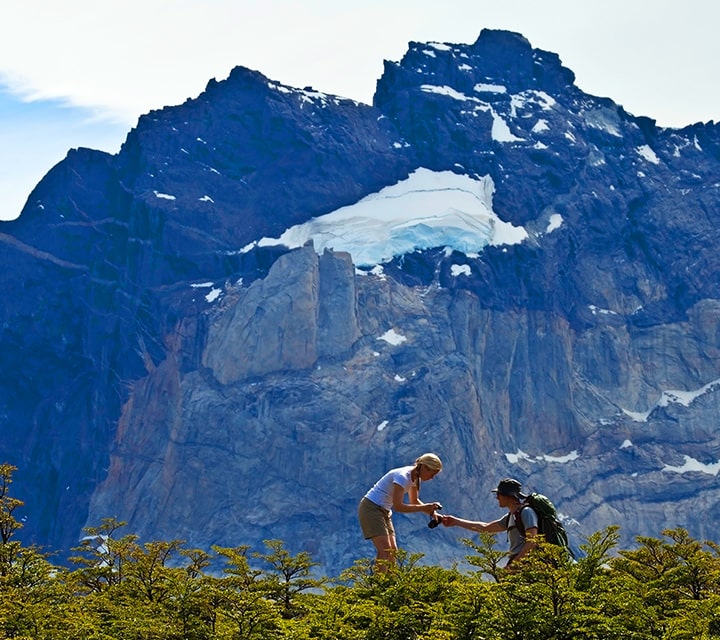
10. Don’t miss Salto Grande on the hike to Mirador Cuernos.
The Sendero Mirador Cuernos is one of the easier hikes in Torres del Paine, but it rewards you in a big way. If you’re traveling with your family, this is the perfect hike for every age and ability level.
The trail starts near Lago Pehoe and winds past the magnificent Salto Grande waterfall until the iconic cuernos, or horns, of the Paine massif come into view across lovely Lake Nordenskjold. Keep your eyes peeled for condors, eagles, and other Patagonian wildlife.
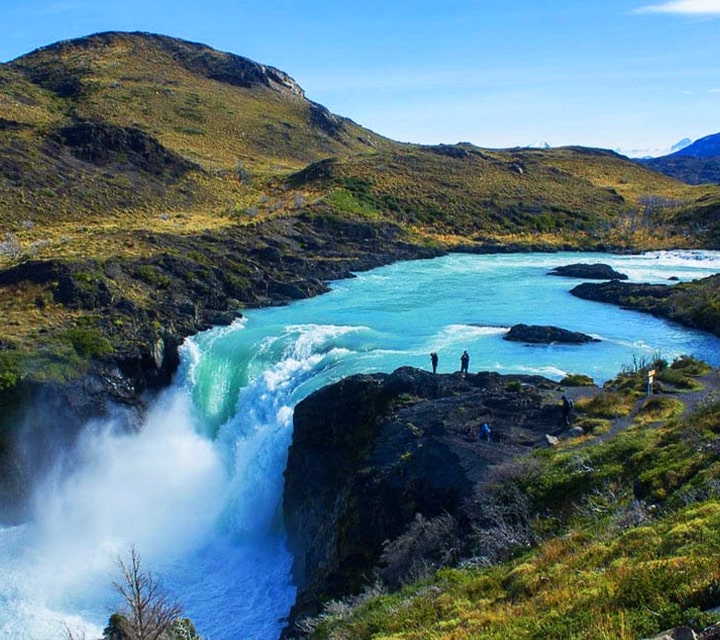
11. Patagonia is one of the only places in the world to spot a Culpeo.
The big cats get all the attention, but the clever little culpeo can steal your heart. Found only in South America, and most specifically in Patagonia and Tierra del Fuego, this nocturnal fox is the second largest canid on the continent.
You’ll typically see culpeo fox loping about the forests and brush of Patagonia National Park. It’s generally a solitary animal, preying on anything from rodents to domestic livestock, although they also eat native fruits and berries. In the summer, listen for their distinctive howl as they search for a mate.
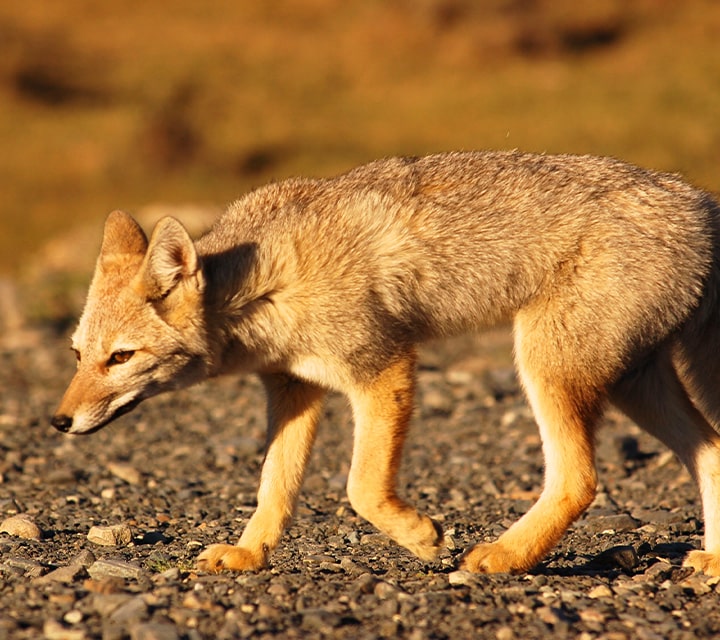
12. The Andean Condor is one of the largest flying birds on earth.
These birds are not beautiful, but they are definitely impressive. With a massive 10-foot wingspan and a gigantic 33-pound body, Andean condors need strong winds to keep them aloft—one reason they make their home in Patagonia.
What they lack in majesty (they are members of the vulture family, after all), they make up for in longevity. Andean condors have been known to live 75 years or more in captivity!
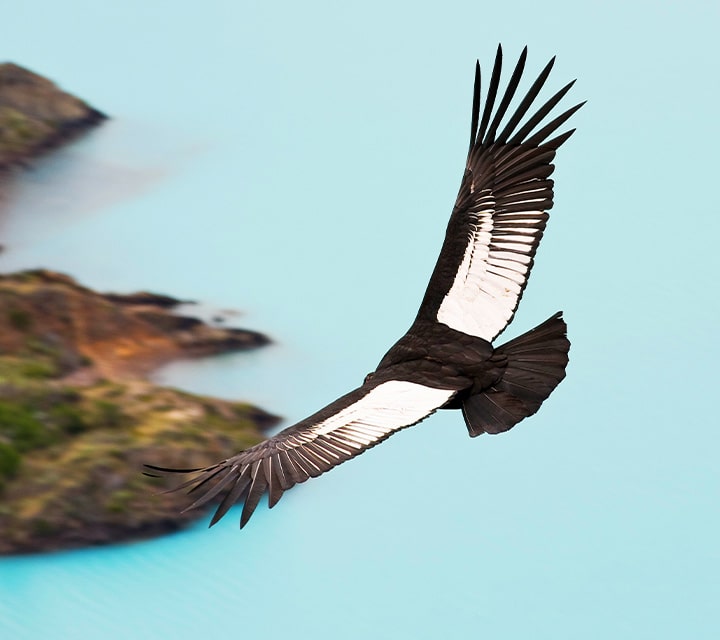
Ready to start your adventure?
If these glimpses of what’s in store in Patagonia leave you wanting more, get in touch and let’s put some plans in motion. Now’s the perfect time to plan a “secret season” tour and save big on our September and October overland safaris with our Patagonia travel deals. If you’re not quite ready to firm up dates, why not sign up for our free email course and learn everything you need to know about planning your own Patagonian adventure?

